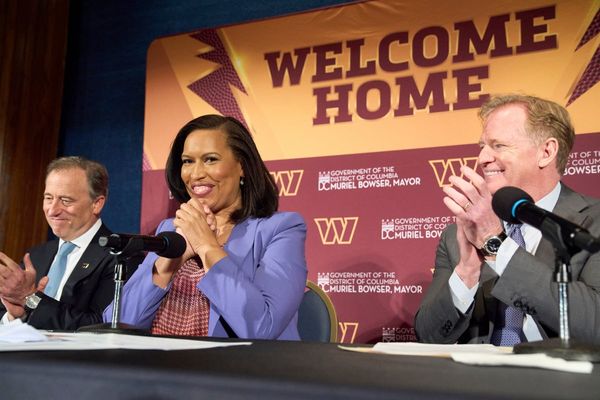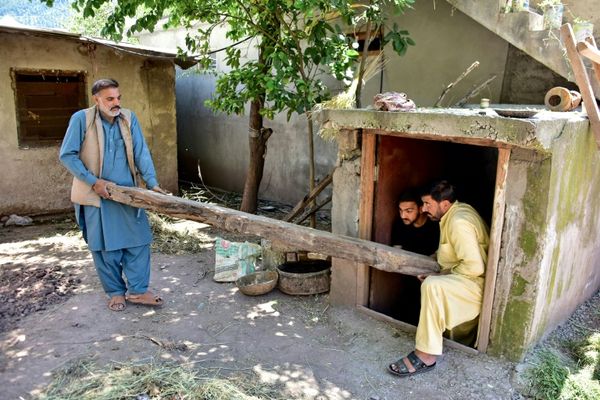Facing a massive affordable-housing crisis pushing Californians out of their hometowns and some onto the street, state legislators passed law after law to boost housing production. Now, Sacramento is asking itself the million-dollar question: Is it working?
The answer: not as quickly as anyone hoped.
Nearly 100 housing bills have been signed into law since 2016 as legislators, in the midst of intense pushback from some growth-resistant city officials and residents, made supercharging the state’s housing supply a top priority. Despite that monumental effort, housing production has remained relatively stagnant, according to data tracked by the state Department of Housing and Community Development.
The disappointing results, laid bare during a recent joint hearing of the Senate and Assembly’s housing committees, point to holes that still need to be fixed before the state can build its way out of the crisis — such as high costs and a significant lack of funding. At the same time, lawmakers are hopeful the volume will improve, insisting some of this new legislation just needs more time before it will fully bear fruit.
“We’re coming up short,” Ben Metcalf, managing director of the UC Berkeley Terner Center for Housing Innovation, said during the hearing. “But I think it’s important to say it’s also early.”
The number of homes permitted across California has increased 16% since 2018 — the year the landmark Senate Bill 35 began forcing cities to approve and expedite certain projects that include affordable units. That’s hardly impressive, considering just 132,811 homes were permitted in 2021 — less than half of what state officials say California needs every year to achieve its target 2.5 million new homes by the end of the decade. And with interest rates and construction costs rising, it’s getting even harder to build.
But while the new housing laws have been slow to boost overall production, they’ve already made a noticeable difference when it comes to affordable homes and small in-law units known as accessory dwelling units, or ADUs.
“We’re already seeing some of the results,” Sen. Scott Wiener, a San Francisco Democrat who chairs the Senate Housing Committee, said at the hearing. “It’s not as quickly as we want, but it’s gradually moving in the right direction.”
Permits for low-income and very-low-income units nearly doubled to 20,245 between 2018 and 2021, while permits for higher-priced units increased by just 5%. Many of the state’s new housing laws either don’t apply or aren’t as useful when it comes to market-rate units. And while low-income units are crucial, they make up a small fraction of the state’s overall housing production. Experts agree they can’t fix the crisis by themselves.
But for affordable housing developers, the new laws have made a world of difference. Elected officials, housing advocates and developers gathered in Mountain View on Friday to celebrate the groundbreaking of La Avenida Apartments — a 100-unit building for low-income residents. The project took advantage of SB 35, which allowed the developers to skip public hearings and dodge certain lawsuits that could delay or even kill the project. That saved them two or three years, estimated Linda Mandolini, president of Eden Housing, which is building the project. And time is money, as delays mean higher interest payments on building loans.
“You can’t overstate how huge that is for affordable housing,” Mandolini said.
SB 35 is perhaps the most well-known of a series of recent housing bills that do everything from streamline the permitting process for certain projects, to require cities to plan for more housing, to allow multifamily developments in single-family neighborhoods.
Legislators also have passed bills that make it easier to add small backyard or garage units to homes in single-family neighborhoods. As a result, the number of such accessory dwelling units permitted in California has increased by nearly 130% to 20,193 units between 2018 and 2021.
But the flurry of new legislation has yet to accomplish for most housing what it has done for ADUs and affordable dwellings. SB 35, for example, can be used to create market-rate housing, but it rarely is, according to research from the Terner Center.
Steve Eggert, founder of development company Anton DevCo, told lawmakers that’s because SB 35’s labor rules for market-rate projects require developers to pay wages that aren’t feasible.
Wiener, who wrote SB 35, is attempting to address that this year with a new bill — SB 423 — that would change those labor requirements. It also would permanently extend SB 35’s streamlining provisions, which are set to sunset in 2025.
The biggest problem, which came up again and again during the recent legislative hearing, is that housing is too expensive to build, and there isn’t enough funding to subsidize low-income projects. It’s costing Eggert’s team $429 per square foot to build a 200-unit project in Santa Cruz — compared to $256 per square foot for a similar project in Colorado, he said. Meanwhile, affordable housing developers have to fight for the limited supply of state and federal funding that allows them to charge reduced rents.
Assemblymember Buffy Wicks, an Oakland Democrat who chairs the Assembly Housing and Community Development Committee, vowed to find ongoing funding for affordable housing — whether through taxes, bonds, or something else.
There’s also some enthusiasm building this year for turning nonresidential sites into housing, Metcalf said. Wiener’s SB 4 would make it easier for religious institutions to build homes on their properties. Assemblymember Matt Haney’s AB 1532 would make it easier to turn office buildings into apartments and condos.
In the meantime, legislators are asking for patience as new state laws ramp up.
“I think the challenge is we’ve done a lot of stuff, we’re not going to see the ROI on it for a little bit longer,” Wicks said in an interview, using an acronym that stands for return on investment. “And if you’re a voter, you’re paying high housing costs today. You’re driving by homeless encampments today. You want to see change now.”







